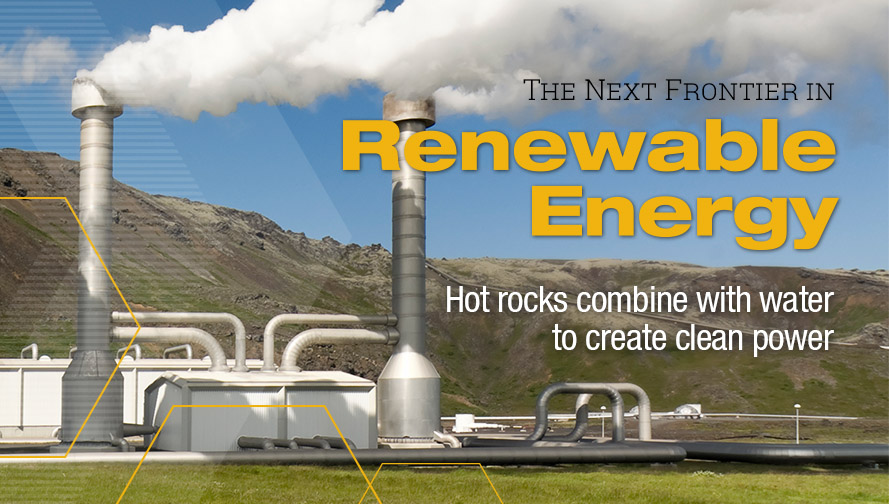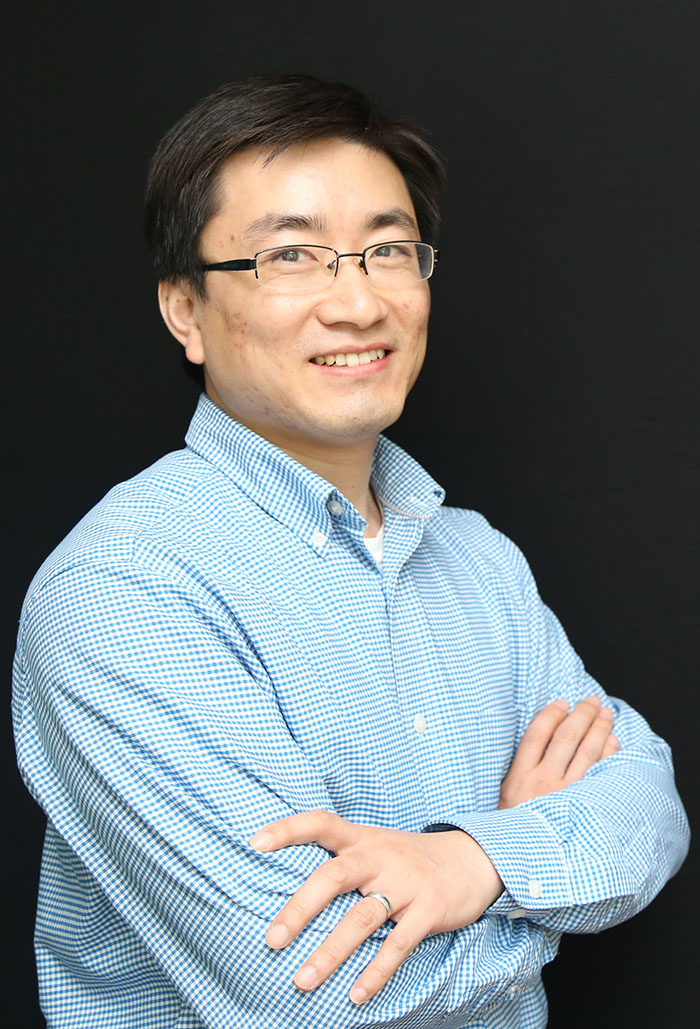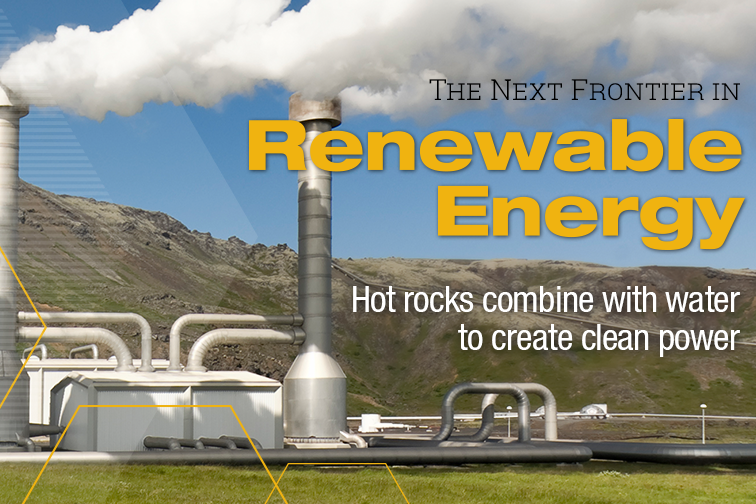 |
By Georgia Parmelee, College of Engineering
In the next two decades, the world faces a yawning gap in the energy we produce and the energy we consume.
Estimated at more than 4 terawatts — that’s 4 trillion watts — it’s a gap equivalent to 10,000 times the output of Hoover Dam.
The School of Civil and Environmental Engineering’s Sheng Dai is working with the National Science Foundation and the U.S. Department of Energy on one of the renewable sources that could help us make up ground: geothermal energy.
 Dai |
“I suspect that deep geothermal energy is going to make a big impact on the state of clean energy,” said Dai, an assistant professor and geotechnical engineer in the School. “Long term, it’s more environmentally friendly and efficient, plus it doesn’t rely on other environmental factors. For instance, with solar energy, you’ll have low energy output if it’s overcast or dusty.”
Dai’s research takes a two-pronged approach to geothermal energy. On one hand is shallow geothermal to efficiently heat and cool buildings. Deep geothermal energy — starting about 3 kilometers below the earth’s surface — would generate clean, renewable energy on a larger scale.
“The rock temperature is very high at 3 to 5 kilometers below the earth’s surface. Some may be above 300 degrees Celsius,” Dai said. “First, you drill down and fracture the rock bed, creating a permeable network. Then water — or any working fluid that produces vapor — flashes through the reservoir to create steam, which is used to generate electricity by powering a turbine.”
With the support of NSF and the Energy Department, Dai uses a set of unprecedented tools to test geomaterials at high temperatures and pressures in the search for ways to harness the potential of geothermal energy. The instruments are proprietary to Georgia Tech; Dai spent a good deal of his Ph.D. building the tools, and no other testing sites across the country have access to similar technology.
Dai said he hopes to use them on a new testing site DOE has identified in Utah, characterizing the area’s material in the lab to assess its viability for producing geothermal energy.
“We are pretty far from commercializing geothermal energy,” Dai said. “There are still a lot of unknowns — we don’t have data on how geomaterials will behave 3 to 5 kilometers down. We also have to consider the long-term effects of running water into the ground and how the rocks will respond.”
Yet the need is great, Dai said. Renewable energy is one of the top challenges facing humanity, not just for the environment, but also for socioeconomic development.
“Fluctuations in energy supply greatly impact economic development,” Dai said. “When there is an energy shortage, cities must power down at certain times, restaurants and other [businesses] must close. Newly developing countries will need more energy as the population grows and living conditions will be constrained if we don’t have enough energy production.”
Renewable sources such as solar and wind energy will help close the world’s energy gap, but they produce just a fraction of the needed energy. For the world to catch up, thousands of renewable energy plants will need to be built. And Dai worries that infrastructure won't be able to keep pace.
“The magnitude of energy needed to power our daily lives is tremendous,” he said, “and there is no one energy source that can solve this problem. If we don’t look to other sources of energy, we won’t be able to keep pace with global energy needs.”

